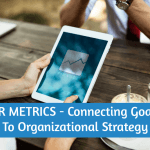
Talent Acquisition Analytics
Successful talent acquisition is the key in creating sustainable leaders, and providing an organization with a strong and functioning foundation of employees who care about the needs of the business while working toward the overall advancement of the company.
A talent solutions survey conducted by LinkedIn found that 82% of recruiters have dealt with a hiring manager that had unrealistic expectations, decreasing the likelihood that the partnership will source the right talent sought by the organization.
Talent acquisition analytics and Big Data are introducing a new world of recruitment, serving the technologically developed business world in a manner that can provide clear and consistent results in the name of employee resourcing. Human resources departments are now able to assess which institutions and organizations are producing the best talent, and can exploit this data when it comes to their own recruitment.
Data Revolutionizes Human Capital Management
Business consulting firm Cognizant published a study into how data is changing human capital management, and found that analytics is the driving force behind several changes in talent recruitment, including:
Forecasting workforce requirements – “predictive analytics provide deep insight into the business’s recruitment needs,” such as where in company is lacking in terms of talent, and filling the gap before it becomes an issue.
Conducting root cause analysis of attrition – “data modeling to analyze and understand the factors contributing to employee attrition,” and using this information when dealing with retirement and resignation.
Targeting available talent supplies – using “qualitative and quantitative information to build a detailed map of the supply of talent in a particular locale,” vastly reducing the time HR spends on researching locations in reference to talent availability.
Defining candidate success profiles – through the use of “predictive modeling, employers can match the right candidate to the right job by identifying traits that distinguish high performers,” which can provide recruiters with an idea of how successful a candidate is likely to be within the organization itself.
The insights provided through the analysis of this data have proven to be indispensable for many companies in the age of online and computerized recruitment, rapidly transforming how HR sources and retains new talent, and data should be used as a framework when it comes to sourcing new talent.
The LinkedIn study recommends using talent acquisition data analytics to make note of certain companies and schools who have the biggest and best talent pools, and keeping an eye out for these names in the recruitment process.
Another key tool when transforming talent data into talent insights is connecting the performance data of current candidates with their recruitment analysis, providing HR with a clear image of the most – and least – successful talent, where they came from, how they developed and what their level of value is to the organization. This can eliminate the possibility of time, money and resources being wasted on the wrong employee for your company. Yet it must be done in ethical, fair way!
Insight data can progress to provide the department with a solid foresight into the future of their recruitment processes, allowing them a talent “crystal ball” of information to ensure only the right talent is introduced.
© New To HR


